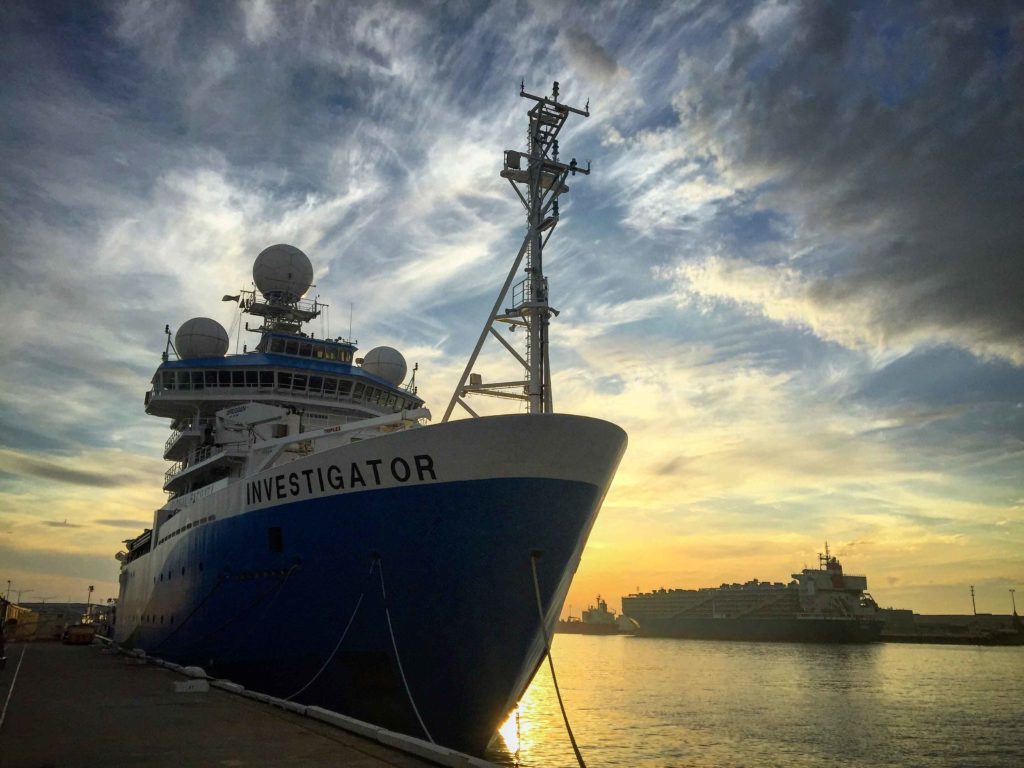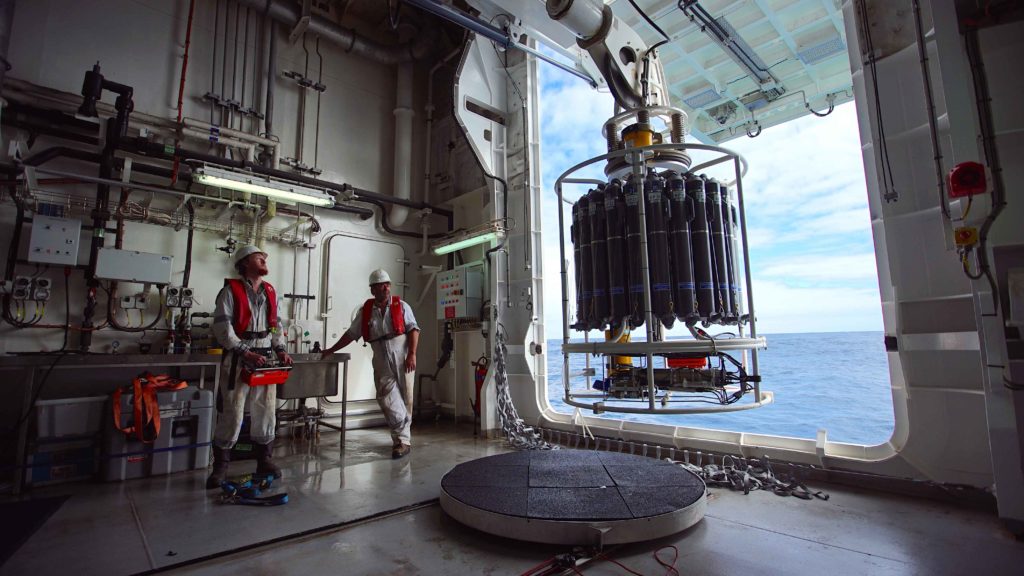Investigator ahoy! Our swanky ship is off to the sub-Antarctic territories of Heard and McDonald Islands to explore the role of underwater volcanoes in nourishing an iron-deficient Southern Ocean. This is the first is a weekly series of pieces from the voyage's chief scientist Mike Coffin.

Picture of a large ship in a port with a beautiful sunset in the background
The RV Investigator prepares to set sail from Freo port last week
Investigator ahoy! Our swanky ship is off to the sub-Antarctic territories of Heard and McDonald Islands to explore the role of underwater volcanoes in nourishing an iron-deficient Southern Ocean. This is the first is a weekly series of pieces from the voyage’s chief scientist Mike Coffin.
By Chief Scientist Mike Coffin
RV Investigator voyage IN2016_V01 – Heard Earth–ocean–biosphere interactions (HEOBI) departed Fremantle on Friday 8 January, bound for the Heard Island region, southern Indian Ocean, on a 58-day mission. The overarching objective of the voyage is to test the hypothesis that hydrothermal systems associated with active underwater hotspot volcanoes supply iron to the Southern Ocean that nourishes phytoplankton blooms.
I first had the idea for this investigation in 2008, and in the intervening eight years, my colleagues and I have assembled an international team of researchers and students, submitted multiple applications to various agencies and authorities for support and permissions, been granted ship-time and science funding, and obtained requisite environmental permits. Thus the voyage is the culmination of nearly a decade of planning involving scores of people.
The science and support team first assembled for mobilisation of the voyage at Fremantle’s Victoria Wharf, where RV Investigator was berthed, from 6-8 January. Two-and-a-half days of intense activity ensued, mirroring the enthusiasm and anticipation of all voyage participants.
We number 60 souls on this voyage. That total includes 29 members of the science party, 11 science support staff, and 20 ship’s crew. The 40-strong research team is a veritable United Nations, representing 14 nationalities from four continents. This diversity reflects our efforts to assemble the best scientific team globally to achieve our research objectives, as well as the boundless nature of the global ocean.

The crew deploys a conductivity-temperature-depth (CTD) rosette into the ocean. The 36 bottles on this carousel, which will be used to study eddies, are designed to withstand pressure at depths of 7,000 metres.
We embarked from Fremantle Friday afternoon with an extra person, a technician who was undertaking final tests of RV Investigator’s navigation system. He was run ashore by a ship’s boat after the tests were deemed successful, and we began the long transit to the Heard Island region late that afternoon.
During the first half of the transit, from 8-12 January, we’ve tested some of the scientific equipment that will be deployed in the Heard Island region, including conductivity-temperature-depth (CTD) and trace metal (TM) rosettes, a bio-optical package, in situ pumps, and the remotely operated towed vehicle (ROTV) Triaxus. Anti-cyclonic and cyclonic eddies were the location of these tests, yielding valuable oceanographic data. We have also launched robotic floats for the Australia-India Strategic Research program and Southern Ocean Carbon and Climate Observations and Modeling (SOCCOM) project as well as drifters for the US National Oceanic and Atmospheric Administration’s (NOAA) Global Drifter Program. En route, we also collected multibeam, backscatter, and sub-bottom profiler data over a site scheduled to be drilled during International Ocean Discovery Program (IODP) Expedition 369 in 2017.


Pingback: Lynchpin – The Ocean Project – Art Science Collaboration | CSIRO news from RV Investigator
15th January 2016 at 10:45 am
Is a main aim to discover deep sea geothermal mineral reserves to mine?
18th January 2016 at 11:36 am
Hi Karis,
The main aim of the voyage is to understand how hydrothermal systems associated with active underwater hotspot volcanoes supply iron to the Southern Ocean.